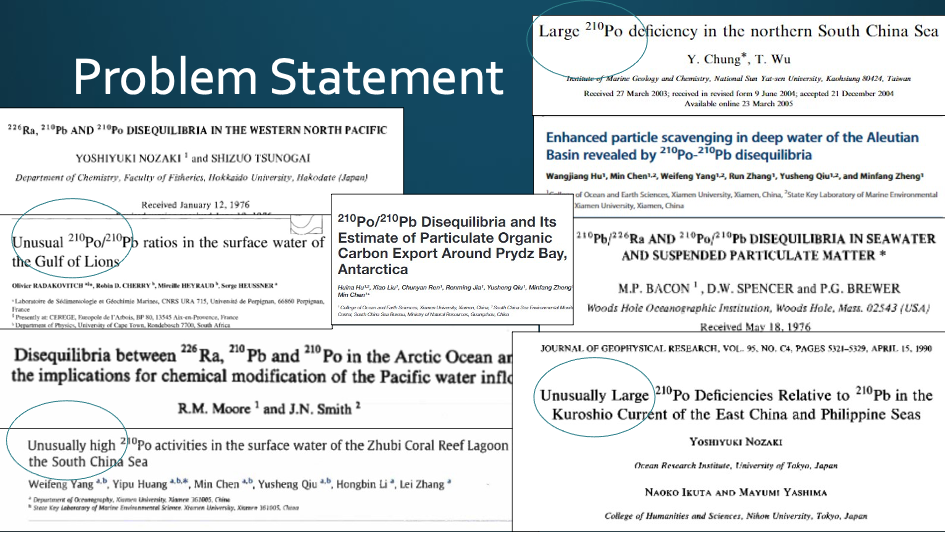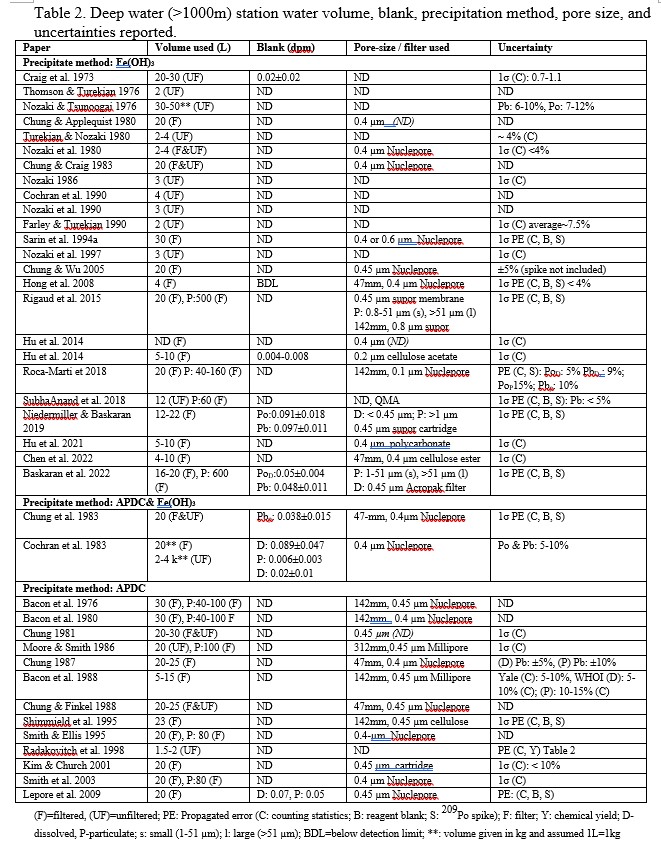Warning on Polonium-210/Lead-210 data quality!
Alerted (and puzzled) by the fact that the published Polonium-210:Lead-210 (Po-210:Pb-210) profiles showed ubiquitous disequilibrium in the deep ocean, Mark Baskaran and his graduate student conducted a critical review of all deep-water Po-210/Pb-210 profiles to evaluate this equilibrium/disequilibrium issue. To do this, they calculated their inventories throughout the water column and evaluated how the Po-210/Pb-210 activity ratio (total = particulate + dissolved) varied. This work was published earlier this year (see reference below). One of the main conclusions is that data quality was an issue, as reported in the table below, taken from the attached paper. The authors have therefore compiled a series of papers in which ‘unusual Po-210’ is reported in the title (see figure below or download it from here), together with recommendations for future Po-210/Pb-210 analyses in water samples.

Table 1: Evaluation of preconcentration method, sample size, reagent blank, filter characteristics, and uncertainty on deep water samples from the Global Ocean Basins

Reference:
Planaj, D., & Baskaran, M. (2024). Inventory-based evaluation of 210Po-210Pb-226Ra disequilibria in deep oceans and new insights on their utility as biogeochemical tracers: A global data synthesis of research over six decades. Earth-Science Reviews, 252, 104759. Access the paper: 10.1016/j.earscirev.2024.104759
